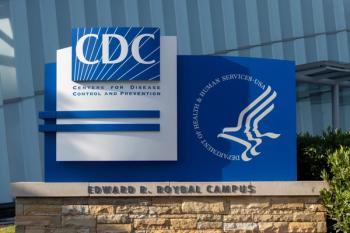
Adherence to Prophylactic Treatment Improves Physical Activity in Hemophilia A
A recent study showed that adherence to prophylaxis for severe hemophilia A can improve a patient’s physical performance.
In addition to reducing bleeds in patients with hemophilia A, adherence to long-term prophylaxis can also improve a patient’s physical performance, according to a new study published in Blood Transfusion.
In hemophilia A, the inability of the blood to clot is caused by the lack of a specific clotting factor, called factor VIII. Current treatments are based on providing missing FVIII to patients as a prophylaxis to reduce spontaneous bleeding episodes and other complications, such as joint disease.
Although patients with hemophilia are typically discouraged from engaging in sports or other types of physical activity, recent studies have suggested that physical activity can benefit patients with blood disorders as long as they adhere to prophylactic treatment. For this study, the researchers examined levels of adherence to prophylaxis in patients with severe hemophilia A to determine whether adherence correlated with physical activity.
The 36-month SHAPE prospective study included 42 patients with severe hemophilia A treated with octocog alfa (Kovaltry) for at least 6 months. Of the patients in the study, 31% were children, 21.4% were adolescents, and 47.6% were adults. The researchers assessed the patients’ level of activity using the Hemophilia and Exercise Project (HEP)-Test-Q and the Early Prophylaxis Immunologic Challenge (EPIC)-Norfolk Physical Activity Questionnaire. The patients’ orthopedic status was assessed by the Hemophilia Joint Health Score (HJHS). To determine adherence, the researchers also measured the percentage of empty vials returned with respect to the prescribed amount.
The study showed that type, frequency, and impact of physical activity varied among the 3 groups. Patients with severe hemophilia A had the worst performance in the domains of “endurance” and “strength/coordination,” according to the HEP-Test-Q.
Among the patients in the study, 80% adhered to the prophylactic regimen (95% CI: 66.1-93.9). Among the adherent patients, 50% had at least 1 bleeding episode in the year before the beginning of the study. This percentage continued to drop during the 3-year follow: only 34.4% had a bleeding episode in the first year, 31.3% in the second, and 28.1% in the third year.
Overall, adherent patients had lower HJHS scores, lost fewer school/work days, reduced target joints, and were more physically active than nonadherent patients, according to the study. Those with better orthopedic joint status reported better subjective physical performance.
“The results of this study showed high adherence to prophylaxis in our Italian population of hemophilia A patients, and this correlated with a significant reduction in bleeding events, number of targeted joints, and school/work days lost over time, and a steady improvement in performance during endurance sports activities,” the researchers concluded.
Reference
Zanon E, Tagliaferri A, Pasca S, et al. Physical activity improved by adherence to prophylaxis in an Italian population of children, adolescents and adults with severe hemophilia A: the SHAPE study. Blood Transfusion. 2019. DOI: 10.2450/2019.0040-19
Newsletter
Stay informed on drug updates, treatment guidelines, and pharmacy practice trends—subscribe to Pharmacy Times for weekly clinical insights.






















































































































































































































